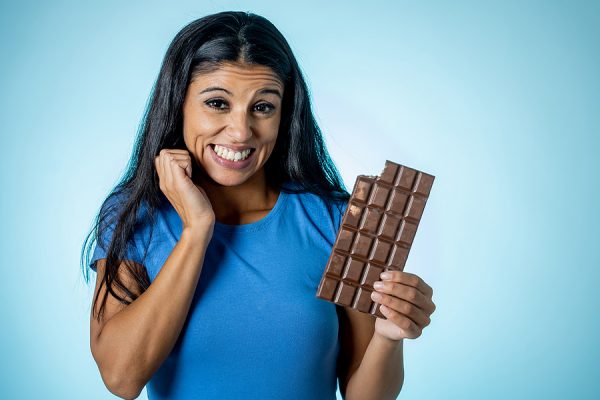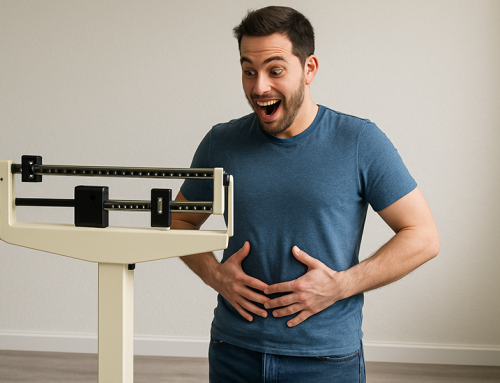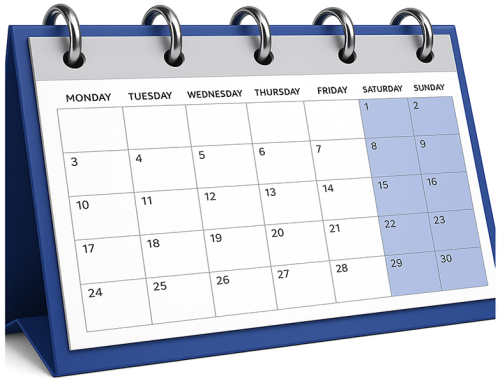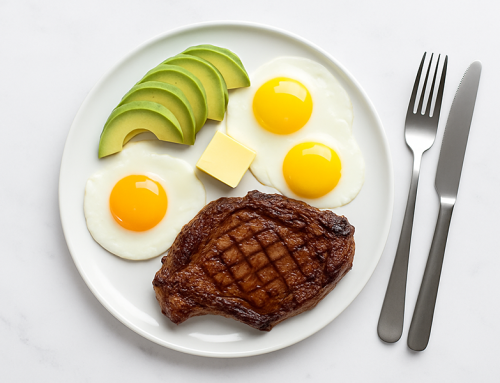What’s the biggest fat loss diet problem, obstacle, or challenge that you feel is holding you back from reaching your fat loss goals? I recently reached out to Burn The Fat Feed the Muscle readers on Facebook and posted that question.
There were hundreds of replies to my survey. It was a tough year because of covid-19, so there were lots of obstacles blocking the path to getting leaner. But I think the diet problems everyone shared with me were mostly the same ones people struggle with all the time. They were simply amplified with the added stress of a pandemic.

Many people were struggling with the same diet challenges, as I heard the same 20 or so named over and over by different people. A few were mentioned exponentially more than others. They included lack of consistency, overwhelm with tracking macros or counting calories, and trouble with sugar cravings, including unplanned snacking and night eating.
In today’s post, you’ll see the list of all the biggest fat loss diet problems in the exact words of these real people who shared them. I promised followers that if they posted their problems, I’d give them solutions, so after each problem is listed, you’ll see my reply.
As you read my answers, you may notice a recurring theme: While covid can certainly be blamed for a lot of comfort eating problems in the past year, I believe a lot of the biggest diet problems today occur because of excessive restriction, unnecessary rules and false beliefs about food and what it takes to get lean and stay lean. Rigid dieting, the very thing most people think will give them success, is the ironic cause of many fat loss diet failures.
Flexible dieting and flexible meal planning are the direction of the future and are the same solution to many different problems.
1. Junk food snacks in the pantry are my problem. They are my go-to comfort food at this time. I just can’t stop snacking.
First, don’t say you can’t stop. People have a bad habit of repeating negative affirmations and if you repeat something enough times, it eventually becomes the truth as far as your subconscious mind is concerned. Change your thoughts to a question like, “How can I snack in a healthier way?” Asking questions prompts your brain to find solutions.
When it comes to processed or high-calorie snack foods, out of sight is the first solution. Having them stashed away in the pantry is good. Sometimes it’s the only choice when other family members are involved.
But if raiding the pantry remains a problem, out of the house is better. It’s crazy to leave temptations right in your path if you have the control to remove them. You don’t control the environment outside your house, but you do control the environment inside.
One of the most powerful ways to manage what you eat is to set up your environment to support your success. Everything you see in your house can be a behavior trigger. It can trigger you to eat junk or it can trigger you to eat healthy food and exercise.
Keeping the treats out of the house and putting a healthy alternative in their place is best. Intentionally leave the healthy snacks out where you can see them. There has never been a day that I haven’t had a fruit bowl and tub of protein powder on the kitchen counter. They are cues to eat healthy food.
Here’s the ultimate solution: keep processed snack food out of the house, have a healthier replacement and also adopt a new mindset: Don’t ban your favorite snack foods or call them forbidden. Let your favorite treats be allowed but with restraint. Eat the foods you like, but if that includes processed snack foods, eat less of them and less often.
Plan to eat healthier replacement snacks most of the time. On those occasions you really want your favorite treat, make eating them inconvenient. Create friction by forcing yourself to go out of your way and leave the house to get them.
2. My biggest challenge is being consistent and making my diet sustainable. I start many diets but can’t stick with all the rules and restrictions.
This question contains part of the answer: The first key to making a fat loss diet sustainable is to avoid restrictive diets with lots of rules. There’s an old proverb that says, the more rules you have, the more you’ll become a rule breaker.
Most people diet based on a list of good foods to eat and bad foods to avoid. Sometimes you’re told to avoid an entire macro, like carbs or fat. That’s the way the diet industry has worked for years. But psychologists have discovered that food restriction correlates with diet failure.
Did you hear about the famous experiment where psychologists told subjects not to think about white elephants? Well, of course they found it impossible. Trying to suppress a thought about something only makes you think about it more. It’s called ironic rebound. Beware of holding a diet mentality based on restriction and focusing on what you can’t have. Instead focus on the healthy foods you want to eat most of the time to help you reach your goal.
When the goal is fat loss, you also need to focus on the calorie deficit. But that’s not banning foods, it’s eating the proper amount of food. If you’re in a calorie deficit, you can eat anything you want and you’ll still get leaner. That’s not suggesting a low-calorie junk food diet is a good idea. It’s saying that foods don’t make you fat, excess calories do.
The second key to make a diet sustainable/consistent is to make it customized. Never follow someone else’s food list, meal plan or eating schedule – you won’t stick to it. Nothing will cause failure faster than trying to follow an eating plan you don’t like, imposed on you by someone else. Learn to create your own meal plans and your motivation and consistency will skyrocket.
It starts with eating the foods you like. Customize everything else in your eating plan as well, including your macros, how aggressive or conservative your calorie deficit is, and especially your meal schedule. A bodybuilder might tell you to eat six times a day and an intermittent faster might say two times a day is better. Ignore everyone else. Ignore what diet is trending. Choose your own schedule based on what fits your preference, your goals and your lifestyle. Once you’ve chosen it, make it habitual.
Third, stay focused on your goals at all times. One reason many people get off track is they lose sight of their goals. Something distracted them that took their eye off the ball. Keep your weight and fitness goals in sight every day. Keep your nutrition goals in front of you in the form of calorie and macro numbers as well as a meal plan. A meal plan is an eating goal for the day.
Also, the more connected you are to the reasons why you want to achieve your goals, the more motivated and consistent you’ll be. Know what’s important to you. Know your why.
Fourth, establish accountability to yourself and others. You can be self-accountable by using a food tracking app (and also a training journal). You can get external accountability by having a coach, friend, supportive family member or community to check in with at least weekly to report progress.
Ultimately the best way to increase consistency is to focus on building habits. You might think a consistent and persistent person is one with more willpower. The truth is, a person who consistently sticks to their eating plan is a person who has built a group of good habits. When you’re running on habit, you stay on track automatically. That’s what a habit is – an automatic behavior.
3. I have a huge problem with sugary food! If I’m stressed, bored or sad, well, I’m craving it! Seriously, it’s a bad addiction. Cake, cookies and chocolate are my comfort foods. My cravings usually come after dinner. I guess that when all my stress and depression take over.
On a positive note, if you’re aware of your problem and the reasons you have it, you’re already a step closer to solving it. Most people are mindless eaters. If you keep practicing mindfulness it will go a long way toward gaining more self-control. But mindful eating is more than awareness alone.
One of the simplest mindful eating solutions is to pause before eating when you’re stressed or emotional. Make it a habit to notice in your stomach if you’re really physically hungry or if it’s a craving triggered by stress or emotions. If it’s not physical hunger, tell yourself you’ll wait 20 minutes or so and then see if you still want it. If it was a craving or emotional urge, it usually passes. Real physical hunger increases over time.
Tell yourself it’s normal to have cravings and you can ride them out (“surf the urge”). This may not be easy at first, but it does work, so keep practicing. If you also stay mindful of and connected to your goals, values, and reasons why, it will get even easier.
If the appetite is still there, then eat. If you really want it, have that treat you were craving but in a restrained amount. Or, plan an alternative in advance. Replacement is usually better than removal. Find a healthier, lower-calorie sweet food. Some of our members swear by things like sugar-free fruit sorbet popsicles and frozen grapes. Sweet fruits like pineapple and strawberries do the trick for many others.
Studies have found that chocolate is the number one most craved food. Not a problem. Have the real thing in restrained quantities once in a while. Even better, learn to make treats with chocolate protein powder and you’ll kill two birds with one stone – satisfy chocolate cravings in a healthier way and meet protein goals.
I often have chocolate protein smoothies, chocolate protein mug cakes, chocolate protein balls, chocolate protein bars, chocolate protein mug cakes and chocolate brownies. Keep chocolate protein powder on hand and learn plenty of recipes.
Start with simple ones like chocolate protein mixed in Greek yogurt (chocolate protein pudding). Just be sure to fit them into your macro and calorie budget for the day and you’re good to go.
4. Wine on the weekends. I’m pooped by Friday night and sitting down with a glass or two relaxes me. But it adds up over the weekend.
One or two glasses of wine only once or twice a week sounds like reasonable moderation. As alcohol intake rises further and further above that (in amount and frequency), the calories really start adding up, and the negative health effects do too.
But I know many people who fit small amounts of wine into their calorie and macro budget. They feel great, look great, and their doctors confirm they are 100% healthy.
If you enjoy a little wine, and it’s really only a little, don’t guilt trip yourself for having it. For a lot of people, a bigger issue is that along with their drinks, the alcohol stimulates appetite, and it’s the extra calories from food that’s the real problem.
Years ago, a study in the American Journal of Clinical Nutrition found that there are gender differences too. Men tend to drink and eat in addition to drinking. Women tend to drink and then not eat. Women are better at compensating. If you drink, be sure to fit alcohol calories into your calorie budget, especially if you’re a man. Plan it. Track it. Then you can enjoy it in moderation.
5. My biggest struggle is hitting my daily protein goal.
Getting enough protein is one of the easiest problems to solve. I’m actually surprised that so many people surveyed said they still struggle with this.
Set a goal to eat a protein with every meal. Studies show that most people eat high carb breakfasts that lack enough protein. They also eat snacks that are mostly carbs and or fat. Start by boosting that morning protein intake. Instead of oatmeal, toast, muffins or cereal alone, have eggs as well. Add nonfat cheese to boost protein even more. Having a protein smoothie or stirring protein powder into your oatmeal is even easier.
For dinners and lunches, eat foods that pack a big protein punch like boneless skinless chicken breast, extra lean ground turkey, extra lean beef or fish. It’s not hard to get 40 to 50 grams of protein that way.
One simple solution is to increase your meal frequency. If you eat only twice a day, it’s pretty hard to cram down enough protein to hit an optimal daily amount. Even if you eat three meals, you must eat a fairly large protein serving with every meal or you risk falling short for the day.
Bodybuilders usually eat four to six times a day. We know now that this doesn’t increase metabolism as was once believed. But it can definitely help you achieve daily protein goals and support muscle growth.
If you’re not into bodybuilding and don’t want to eat that often, it helps a lot to eat breakfast, lunch, and dinner, and add one snack. But instead of making it the usual carb or sugar-heavy packaged food, make it a protein rich snack.
My go-to snack is an evening Greek yogurt with protein powder stirred in. There you have it – 50 extra grams of protein just like that. If you have the calories to spare, mix in a little natural peanut butter with chocolate protein powder – it’s like dessert.
I have no affiliation to supplement companies that sell protein. To me it’s just powdered food or a recipe ingredient. But it’s a useful one if you’re struggling to hit your protein goal from whole foods alone.
6. I am a short girl with a low-calorie requirement, but the appetite of a giant. How do I deal with hunger when I’m dieting in a deficit? Maintaining a calorie deficit is an ongoing struggle.
If you’re in a calorie deficit with a goal of losing fat, it’s normal to feel some hunger. To expect to lose fat with zero hunger is not realistic and in fact, you’re supposed to feel hunger when your habitual meal time rolls around. But if your hunger is ravenous and it’s truly physical hunger, it will be tough to stick with your deficit and you should consider some strategies to control your appetite.
Number one is to eat a lean protein with every meal. It suppresses your appetite better than any macronutrient. You also may want to increase your protein intake so it’s in the higher end of the recommended range.
Take a second look at your overall macro ratios as well. Some people feel hungrier on very high carb, very low fat diets. Shifting to a little less carbs and a little more protein and fat sometimes helps.
Regardless of what you do with your overall carb intake, always eat high fiber foods with every meal. They add bulk, slow GI transit time and may help you feel fuller.
Drink a lot of water or find a non-caloric beverage to drink before meals, with meals or when you feel hungry. It may not be a true appetite suppressant but it does fill up your stomach. Keep alcohol to a minimum. Alcohol distorts your body’s perception of hunger, satiety and fullness.
Try some food substitutions – especially carbs – to see which ones make you feel fuller. Believe it or not, the often-demonized potato has the highest satiety index of any carb food. Greek yogurt is well known for being filling. Personally, I find a bowl of oatmeal incredibly filling. Experiment, because ultimately, it’s an individual thing. Different people don’t always respond the same way to the same food. When you find foods that make you feel fuller, make them daily staples.
Be aware of how breakfast and meal frequency affects your hunger. Whether or not breakfast reduces hunger and calorie intake for the day has become a contentious topic in recent years. It used to be a universal recommendation that everyone should eat breakfast, to ensure you don’t get hungry later in the day.
There’s plenty of research supporting this. But a confounder is that people who were previously skipping breakfast had no problems if they kept skipping. People who were accustomed to eating breakfast and skipped would get hungry. That suggests if you have been a long time breakfast eater, do not start skipping breakfast (or lunch) or you’re likely to suffer from hunger later in the day.
It appears your hormones synchronize to your accustomed mealtimes and cue hunger at those times. Therefore, you should choose the meal schedule that suits your preferences and makes you feel the most satisfied. Once you’ve established your schedule, be sure to stick with it. Don’t miss regularly scheduled meals or you may end up ravenous and binging.
Last but not least, get 7 to 9 hours of quality sleep to control your hunger hormones. Sleep deprivation increases hunger hormones and leads to more unplanned snacking during the day. Specifically, sleep deprivation can reduce leptin, the “anti-starvation hormone” that decreases hunger) and increase ghrelin, a stomach hormone that increases hunger.
7. My problem is feeling frustrated and guilty if I miss a meal or eat the wrong thing.
Feeling bad after eating the “wrong thing” is common. Ironically, that sometimes leads you back to even more food for comfort. I have four tips to get rid of those feelings.
First, don’t try to be perfect, and understand you don’t have to be. If you eat unprocessed nutritious foods 80% or 90% of the time, that’s more than good enough to stay healthy. Eat anything you want the other 10% to 20% of the time, as long as you control the portions, and you’ll still lose fat.
Second, normalize the setback. Remind yourself that everyone misses a meal or eats the wrong thing once in a while. You’re only human. It happens. Life happens. Tell yourself that what happens once in a while doesn’t matter much and you simply need to stick with your plan most of the time to get the results you want.
Third, practice self-compassion not self-criticism. Psychology research shows over and over again that self-compassion is the best immediate response to most mistakes, slip-ups, setbacks or willpower failures. It removes the guilt that only makes you feel worse. Guilt accomplishes nothing positive. Forgive yourself and move on.
Fourth, get back on track fast. You’re going to be off track at times and that’s ok. You simply have to be on track most of the time. The key to success is to stay aware of where you are, and the second you realize you’re off course, instantly make the decision to get back on track, and take action on that decision as soon as you can. Tell yourself, “I’m only one meal away from being on track again.”
8. I track my macros with an app but my challenge is simply stopping when I hit my calorie goal for the day. Nighttime eating and after supper snacks have been killer lately.
Unplanned snacking can kill any diet if it’s impulsive and adds calories on top of your usual intake. But if it’s planned, it doesn’t hurt, it can help.
Reanalyze your meal schedule. If you struggle with snacking outside of regular meals, why not build snacks right into your regular meal schedule? If you were eating three meals a day, change your schedule to three meals plus an evening snack, which you seem to want. Simply divide your calories across the four eating occasions so they’re still the same at the end of the day.
Make sure you avoid snacking outside your planned schedule and especially when you’re not physically hungry. People eat for all kinds of reasons that have nothing to do with real physical hunger. People eat because they feel stressed, lonely, emotional and the list goes on. People snack simply because they’re bored or it’s a habit to eat when doing something else like watching TV at night. It’s a skill to distinguish between physical hunger and emotional cravings and you can learn it and get better at it with practice.
Doing proactive meal planning instead of simply tracking macros can work wonders. If the only thing you do is set goals for daily calorie and macro targets and then you log each meal into an app as the day goes on, that’s macro tracking. It’s helpful for accountability and awareness, but it’s reactive, it’s not proactive meal planning.
When you’re a meal planner instead of just being a macro tracker, you rarely have problems overeating at night, because you planned out exactly how much and when you should eat during the morning and afternoon. You’ve pre-committed to what and when you’re going to eat, and you can plan your intake for the best hunger control possible.
9. Trying to calculate my macro goals is my biggest problem.
Figuring out macros can seem especially frustrating today. Macros for keto are something like 70% fat, 25% protein and 5% carbs! And then plant-based dieters might insist that should be 65% carbs, 20% protein and 15% fat, pretty much the opposite. Then a bodybuilder tells you the macros should be 40% protein, 40% carbs and 20% fat. It’s confusing at times.
Here are two quick tips: One, if in doubt, avoid extremes. Any kind of diet extreme is rarely a good idea because most people will find it unsustainable. If you want to try a novel macro ratio later, there’s nothing wrong with experimenting, but starting on the extremes is usually the wrong move. Start with balanced macros.
Two, customize your macros. Never follow any diet that prescribes only one macro ratio for everyone unless you’re sure that’s the right macro guideline for you. You should customize not only based on your goals, but also your personal preferences.
If your goal is fat loss and you’re in a moderate calorie deficit, it’s hard to go wrong with 35% protein, 40-45% carbs and 20-25% fat. There’s also a new macro calculating formula based on setting protein first, relative to your body weight. You can see how it’s done in this post: The New Rules Of Setting Your Macros
10. Hitting all my macro goals is my biggest challenge. I change my meals a lot from day to day, but then I get too much of one macro, too little of a macro, or my macros are completely out of proportion.
If you’re logging your food intake with an app and tracking your macros on the fly, it’s common to end up with the numbers out of proportion near the end of the day.
Macro tracking alone can help, but an even better method is proactive meal planning where you create your meal plan in advance. If your calories and macros aren’t close enough to your targets, you simply edit your first draft meal plan, adjusting the food portions up or down until you get closer to your macro goals. Then, you simply follow your plan.
Also consider that there’s nothing wrong with eating mostly the same thing every day, unless variety is really important to you. In fact, this might be the number one strategy for simplifying meal planning and easily hitting macro targets day after day.
Many people use a mobile app to journal food and tally up macros as the day goes on. But If you create one daily meal plan you really like and follow it every day, there’s nothing else to track, you’re just following the plan you already created in advance. When you want variety, it’s easy to make exchanges and rotate meals if you think of your primary meal plan as a template.
There’s no question that if you want every meal to be different every day, both planning and tracking is a lot harder and you really have to journal your food intake and track macros with an app to stay on top of it.
A happy medium might be eating the same breakfast and lunch every day, and rotating the dinners more often. That’s not hard to manage.
To make sure you’re eating the amount you planned to eat, use a food scale, at least in the beginning, until you get very educated and skilled at estimating portion sizes.
An important tip: Never be a perfectionist or macronutrient micromanager. Try to get as close as you can to your protein and calorie target every day, but carbs and fat have a wide range of acceptable intakes, so close enough is close enough. If you’re within five percent either way, you might as well say that’s hitting the bullseye.
For macro-balanced fat loss diets, you can get your macro ratios automatically in the right ballpark by using a meal building template. Even if you don’t track macros with an app or meal planning software, all you have to do is combine a lean protein, a fibrous carb (or fruit) and a starchy carb in every meal. Include a small portion of fat as well but remember that may be incorporated in the protein foods already (like whole eggs and salmon).
Some nutrition coaches and dieticians teach this concept in the form of a plating system. You visualize your plate with one-third protein, one-third-vegetable, and one-third starchy carb or whole grain, about a palm-sized portion each for women, a palm and a half for men. You include a thumb sized portion of fat.
You may need to adjust your serving sizes up or down to be sure your calories are also in the right ballpark, but getting your macros close to your targets can be as simple as using these easy systems.
My new book on flexible meal planning teaches the entire process: CLICK HERE to learn more
That’s it for today. Until next week,
Train hard and expect success!
Tom Venuto,
Founder & CEO, Burn the Fat Inner Circle
Author of Burn the Fat, Feed the Muscle
Author of The BFFM Guide to Flexible Meal Planning For Fat Loss
PS. Read Part 2: www.burnthefatblog.com/10-more-fat-loss-diet-problems-solved/

Tom Venuto is a natural bodybuilding and fat loss expert. He is also a recipe creator specializing in fat-burning, muscle-building cooking. Tom is a former competitive bodybuilder and today works as a full-time fitness coach, writer, blogger, and author. In his spare time, he is an avid outdoor enthusiast and backpacker. His book, Burn The Fat, Feed The Muscle is an international bestseller, first as an ebook and now as a hardcover and audiobook. The Body Fat Solution, Tom’s book about emotional eating and long-term weight maintenance, was an Oprah Magazine and Men’s Fitness Magazine pick. Tom is also the founder of Burn The Fat Inner Circle – a fitness support community with over 52,000 members worldwide since 2006. Click here for membership details






All your suggestions are helpful though I do detest Greek yogurt and natural P’Butter.
Do you have a favourite Protein powder? I also detest the word DIET, it is a negative sounding word and requires a change to something more positive!
I am 84 years old and have developed some bad habits that I am very aware of. Some I plan to give up.
I am 5ft 2″ so what is my daily calorie amount? Also, I am somewhat small boned.
Your are very clever and have assisted tons of people all these years and are continuing to do so and I admire your ability to help individuals with their Health issues. So, Thank you very much!
Hi Joanne. the spirit of the article is eat what you like (but stay within your calorie/macro budget) so if you don’t like greek yogurt (with protein and PB), dont eat it, its simply a very easy way for many people to give a huge boost to protein intake in a single snack. There are other ways, like using protein powder to make a smoothie or shake. I don’t recommend/endorse specific protein brands because I dont want to be associated with the supplement industry, but the type of protein I personally use most is whey or a whey/casein mix, because its very high quality. there are other options, even including for vegans (rice, pea, hemp, soy and so on). Most women burn around 2000 to 2100 calories per day so when the goal is weight loss (calorie deficit), 1400 to 1800 per day is common. But it depends on each individual especially activity level, so it could be slightly lower or a lot higher. Thanks for posting.
When I’m feeling hungry I tell myself I’m thirsty and take a drink of water. It’s worked for me.
Terry, yes, that works for quite a few people (#6)
Hey Tom,
It’s been a long time. So good to hear your thoughts. Frankly, I’m busy but unfulfilled. Sheltering in place has taken away everything but work and it’s not a good time to change jobs to try and make that a source of fulfillment. At first I thought I was bored now that I live and work in the same space, but then I realized it’s more like depression. Being unfulfilled and feeling somewhat hopeless, I’m eating things I shouldn’t just to try and change how I feel.
Hi Kay. Great to hear from you. This sheltering in place and quarantining thing has created some strange emotions and feelings and they do sometimes feel like depression and hopelessness. lots of folks turning to food even when not physically hungry, to feel better. If it helps, one thing I did and some others did as well is to throw ourselves into both home training and home cooking. I created more healthy recipes in the last year than I did in the last five years. (I also got outside, even through the winter, for hiking and trail running. it helped beat that cooped up feeling). I also learned more about bodyweight training, resistance band training and simple home training than in the last 30 years. These have been good sources of fulfillment, in addition to fortunately still enjoying this same work I do in fitness publishing and coaching.